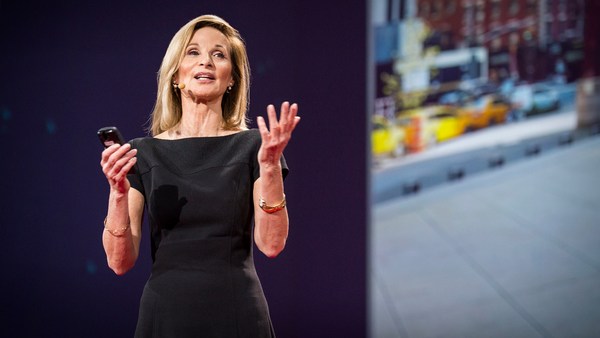The urban explosion of the last years of economic boom also produced dramatic marginalization, resulting in the explosion of slums in many parts of the world. This polarization of enclaves of mega-wealth surrounded by sectors of poverty and the socioeconomic inequalities they have engendered is really at the center of today's urban crisis. But I want to begin tonight by suggesting that this urban crisis is not only economic or environmental. It's particularly a cultural crisis, a crisis of the institutions unable to reimagine the stupid ways which we have been growing, unable to challenge the oil-hungry, selfish urbanization that have perpetuated cities based on consumption, from southern California to New York to Dubai. So I just really want to share with you a reflection that the future of cities today depends less on buildings and, in fact, depends more on the fundamental reorganization of socioeconomic relations, that the best ideas in the shaping of the city in the future will not come from enclaves of economic power and abundance, but in fact from sectors of conflict and scarcity from which an urgent imagination can really inspire us to rethink urban growth today.
And let me illustrate what I mean by understanding or engaging sites of conflict as harboring creativity, as I briefly introduce you to the Tijuana-San Diego border region, which has been the laboratory to rethink my practice as an architect.
This is the wall, the border wall, that separates San Diego and Tijuana, Latin America and the United States, a physical emblem of exclusionary planning policies that have perpetuated the division of communities, jurisdictions and resources across the world. In this border region, we find some of the wealthiest real estate, as I once found in the edges of San Diego, barely 20 minutes away from some of the poorest settlements in Latin America. And while these two cities have the same population, San Diego has grown six times larger than Tijuana in the last decades, immediately thrusting us to confront the tensions and conflicts between sprawl and density, which are at the center of today's discussion about environmental sustainability. So I've been arguing in the last years that, in fact, the slums of Tijuana can teach a lot to the sprawls of San Diego when it comes to socioeconomic sustainability, that we should pay attention and learn from the many migrant communities on both sides of this border wall so that we can translate their informal processes of urbanization.
What do I mean by the informal in this case? I'm really just talking about the compendium of social practices of adaptation that enable many of these migrant communities to transgress imposed political and economic recipes of urbanization. I'm talking simply about the creative intelligence of the bottom-up, whether manifested in the slums of Tijuana that build themselves, in fact, with the waste of San Diego, or the many migrant neighborhoods in Southern California that have begun to be retrofitted with difference in the last decades.
So I've been interested as an artist in the measuring, the observation, of many of the trans-border informal flows across this border: in one direction, from south to north, the flow of immigrants into the United States, and from north to south the flow of waste from southern California into Tijuana. I'm referring to the recycling of these old post-war bungalows that Mexican contractors bring to the border as American developers are disposing of them in the process of building a more inflated version of suburbia in the last decades. So these are houses waiting to cross the border. Not only people cross the border here, but entire chunks of one city move to the next, and when these houses are placed on top of these steel frames, they leave the first floor to become the second to be in-filled with more house, with a small business. This layering of spaces and economies is very interesting to notice. But not only houses, also small debris from one city, from San Diego, to Tijuana. Probably a lot of you have seen the rubber tires that are used in the slums to build retaining walls. But look at what people have done here in conditions of socioeconomic emergency. They have figured out how to peel off the tire, how to thread it and interlock it to construct a more efficient retaining wall. Or the garage doors that are brought from San Diego in trucks to become the new skin of emergency housing in many of these slums surrounding the edges of Tijuana.
So while, as an architect, this is a very compelling thing to witness, this creative intelligence, I also want to keep myself in check. I don't want to romanticize poverty. I just want to suggest that this informal urbanization is not just the image of precariousness, that informality here, the informal, is really a set of socioeconomic and political procedures that we could translate as artists, that this is about a bottom-up urbanization that performs. See here, buildings are not important just for their looks, but, in fact, they are important for what they can do. They truly perform as they transform through time and as communities negotiate the spaces and boundaries and resources.
So while waste flows southbound, people go north in search of dollars, and most of my research has had to do with the impact of immigration in the alteration of the homogeneity of many neighborhoods in the United States, particularly in San Diego. And I'm talking about how this begins to suggest that the future of Southern California depends on the retrofitting of the large urbanization -- I mean, on steroids -- with the small programs, social and economic. I'm referring to how immigrants, when they come to these neighborhoods, they begin to alter the one-dimensionality of parcels and properties into more socially and economically complex systems, as they begin to plug an informal economy into a garage, or as they build an illegal granny flat to support an extended family. This socioeconomic entrepreneurship on the ground within these neighborhoods really begins to suggest ways of translating that into new, inclusive and more equitable land use policies. So many stories emerge from these dynamics of alteration of space, such as "the informal Buddha," which tells the story of a small house that saved itself, it did not travel to Mexico, but it was retrofitted in the end into a Buddhist temple, and in so doing, this small house transforms or mutates from a singular dwelling into a small, or a micro, socioeconomic and cultural infrastructure inside a neighborhood.
So these action neighborhoods, as I call them, really become the inspiration to imagine other interpretations of citizenship that have less to do, in fact, with belonging to the nation-state, and more with upholding the notion of citizenship as a creative act that reorganizes institutional protocols in the spaces of the city.
As an artist, I've been interested, in fact, in the visualization of citizenship, the gathering of many anecdotes, urban stories, in order to narrativize the relationship between social processes and spaces. This is a story of a group of teenagers that one night, a few months ago, decided to invade this space under the freeway to begin constructing their own skateboard park. With shovels in hand, they started to dig. Two weeks later, the police stopped them. They barricaded the place, and the teenagers were evicted, and the teenagers decided to fight back, not with bank cards or slogans but with constructing a critical process. The first thing they did was to recognize the specificity of political jurisdiction inscribed in that empty space. They found out that they had been lucky because they had not begun to dig under Caltrans territoy. Caltrans is a state agency that governs the freeway, so it would have been very difficult to negotiate with them. They were lucky, they said, because they began to dig under an arm of the freeway that belongs to the local municipality. They were also lucky, they said, because they began to dig in a sort of Bermuda Triangle of jurisdiction, between port authority, airport authority, two city districts, and a review board. All these red lines are the invisible political institutions that were inscribed in that leftover empty space. With this knowledge, these teenagers as skaters confronted the city. They came to the city attorney's office. The city attorney told them that in order to continue the negotiation they had to become an NGO, and of course they didn't know what an NGO was. They had to talk to their friends in Seattle who had gone through the same experience. And they began to realize the necessity to organize themselves even deeper and began to fundraise, to organize budgets, to really be aware of all the knowledge embedded in the urban code in San Diego so that they could begin to redefine the very meaning of public space in the city, expanding it to other categories. At the end, the teenagers won the case with that evidence, and they were able to construct their skateboard park under that freeway.
Now for many of you, this story might seem trivial or naive. For me as an architect, it has become a fundamental narrative, because it begins to teach me that this micro-community not only designed another category of public space but they also designed the socioeconomic protocols that were necessary to be inscribed in that space for its long-term sustainability. They also taught me that similar to the migrant communities on both sides of the border, they engaged conflict itself as a creative tool, because they had to produce a process that enabled them to reorganize resources and the politics of the city. In that act, that informal, bottom-up act of transgression, really began to trickle up to transform top-down policy.
Now this journey from the bottom-up to the transformation of the top-down is where I find hope today. And I'm thinking of how these modest alterations with space and with policy in many cities in the world, in primarily the urgency of a collective imagination as these communities reimagine their own forms of governance, social organization, and infrastructure, really is at the center of the new formation of democratic politics of the urban. It is, in fact, this that could become the framework for producing new social and economic justice in the city. I want to say this and emphasize it, because this is the only way I see that can enable us to move from urbanizations of consumption to neighborhoods of production today.
Thank you.
(Applause)





